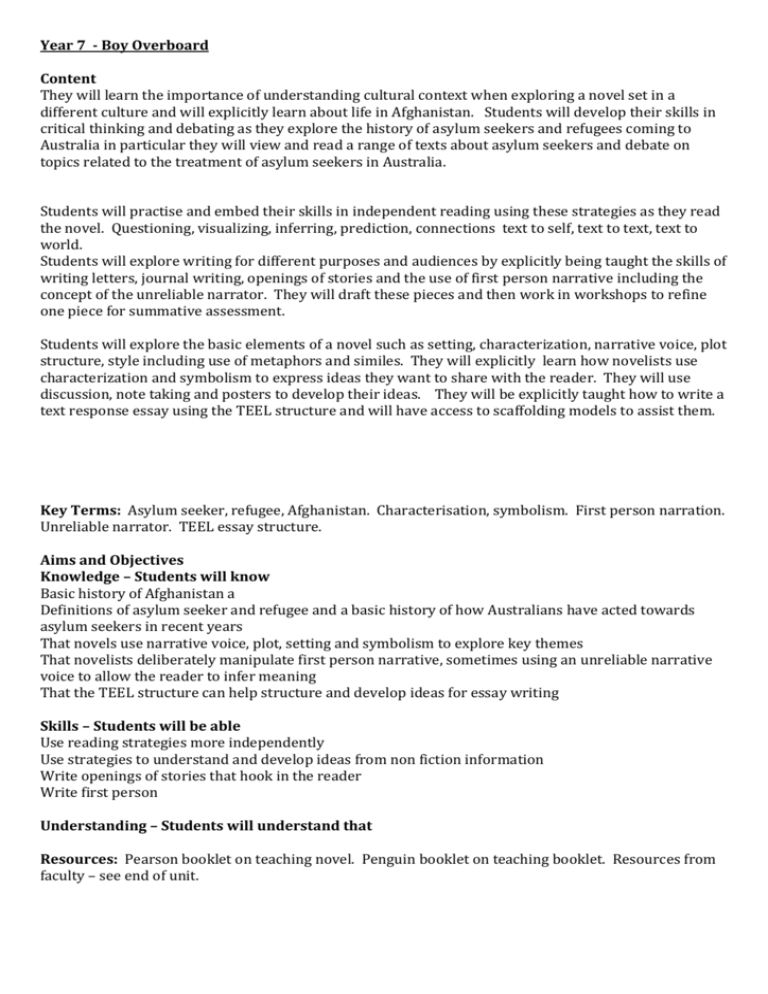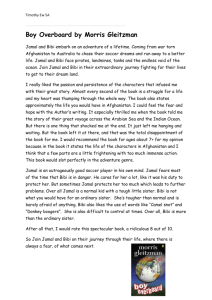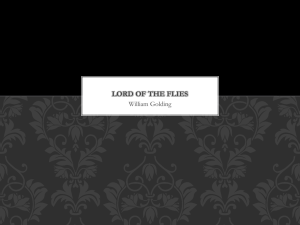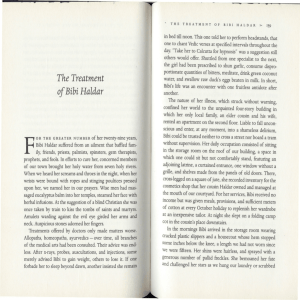Year 7 - Boy Overboard Unit
advertisement

Year 7 - Boy Overboard Content They will learn the importance of understanding cultural context when exploring a novel set in a different culture and will explicitly learn about life in Afghanistan. Students will develop their skills in critical thinking and debating as they explore the history of asylum seekers and refugees coming to Australia in particular they will view and read a range of texts about asylum seekers and debate on topics related to the treatment of asylum seekers in Australia. Students will practise and embed their skills in independent reading using these strategies as they read the novel. Questioning, visualizing, inferring, prediction, connections text to self, text to text, text to world. Students will explore writing for different purposes and audiences by explicitly being taught the skills of writing letters, journal writing, openings of stories and the use of first person narrative including the concept of the unreliable narrator. They will draft these pieces and then work in workshops to refine one piece for summative assessment. Students will explore the basic elements of a novel such as setting, characterization, narrative voice, plot structure, style including use of metaphors and similes. They will explicitly learn how novelists use characterization and symbolism to express ideas they want to share with the reader. They will use discussion, note taking and posters to develop their ideas. They will be explicitly taught how to write a text response essay using the TEEL structure and will have access to scaffolding models to assist them. Key Terms: Asylum seeker, refugee, Afghanistan. Characterisation, symbolism. First person narration. Unreliable narrator. TEEL essay structure. Aims and Objectives Knowledge – Students will know Basic history of Afghanistan a Definitions of asylum seeker and refugee and a basic history of how Australians have acted towards asylum seekers in recent years That novels use narrative voice, plot, setting and symbolism to explore key themes That novelists deliberately manipulate first person narrative, sometimes using an unreliable narrative voice to allow the reader to infer meaning That the TEEL structure can help structure and develop ideas for essay writing Skills – Students will be able Use reading strategies more independently Use strategies to understand and develop ideas from non fiction information Write openings of stories that hook in the reader Write first person Understanding – Students will understand that Resources: Pearson booklet on teaching novel. Penguin booklet on teaching booklet. Resources from faculty – see end of unit. Learning Activity Student Product Formative Summative Questions on chapter one – sticky notes or notes in folder F – using questioning to engage with text 1 - Draft of opening of story– 300words (Class and homework) F – developing skills in writing engaging openings to stories and using first person (possible summative) F – learning skills for taking notes on non-fiction multi modal and written texts Introduce unit. Students will be exploring life in Afghanistan, writing their own piece about Afghanistan. They will also be learning about how novels are constructed writing a character profile and an essay about the novel and creating at least three draft written texts and then choosing two to finish - with workshops provided to help with this process. They will have to hand in the drafts with final copies – at least one final copy must be a letter. (The draft pieces that could be used are numbered in student product column Use questioning strategy to read first chapter of text. What are the questions that are raised? Which questions are answered in the text and which aren’t? (could have table questions and possible answers – in text or not?) Discuss how raising questions for readers to find answers is a crucial technique for creating opening to stories. Students can use sticky notes or write questions in folders. Teach students about narrative voice and first person narrative – discuss the need for that narrator to be energetic, inquisitive, adventurous. Discuss how their personality is conveyed – through the words they choose. Look at the words used in chapter one – verbs in particular and descriptions. Infer the personality of Jamal from the language he uses and the things he chooses to say. Give students a basic plot and ask them to write an opening that creates questions in the reader’s minds – answering some but not all to hook them in. Suggest plots: first day in a new school. Shipwrecked on a desert island. They should also use a first person voice and make sure the way they write creates a particular personality for their narrator. (Above best done as a home group) Some questions answered in text and some not – those are to do with cultural context of Afghanistan – which will now explore. Read and watch information about Afghanistan. They should fill in table of two columns (landscape). First column = key facts and second = My response – questions/thoughts/feelings/other ideas. Following three are suggestions for information 1 - Watch http://vimeo.com/31426899 for positive images of Afghanistan 2 - See powerpoints for facts, figures and tough sides of life http://www.releaseinternational.org/afghanistan-powerpoint2013/ - designed for Christian Group but useful and right up to date. And powerpoint from wiki Table of facts and responses to life in Afghanistan. 3 - Read Pearson 1.1. out loud. Use questions to explore and text. Life in Afghanistan synthesis piece. (class and homework) Character notes S – synethesising own ideas and different facts to create structured piece Read chapters 2 and 3 as a class note metaphors and similes and style of writing. (Can have narrator and then parts – allocated to students) Do visualization acitivities with chapter four. Visualisation F – practising visualistaion skills Divide up chapters 5 – 10 – a group of four takes each chapter. Their task is to present the chapter to the rest of the group. They must give brief summary of chapter then present freeze frames of key moments. Students should ask questions of key characters in the freeze frames and the actors answer in character. Group work – F – exploring freeze frames of character chapters Students should synthesise notes into a piece of writing called Life in Afghanistan. They can choose their audience e.g. Grade 4 students or Year 11 students – will change the tone – choice of vocabulary. (The above can be done with combined classes) Students will be reading the novel. They should have charts they fill in as they read about Bibi and Jamal. Give 4 landscape pages to each character and have two columns – Column 1 = Key Quotes/Events (Could be what they say, what others say, what they do) Column 2 = what this shows about the character. (This is I think more higher order thinking way of keeping notes on the novel rather than just straight events. Plot summary is available on wiki as well). Watching students can keep notes in their character Discuss idea of unreliable narrator in relation to chapter 8 – make notes Read chapter 11. Optional Task - Use butcher paper make tape trees and in groups place on symbols, labels etc of what they would miss if they switched lives with someone growing up under the Taliban Fill in character notes This could work with combined classes F – understanding characterization in novels Character notes Butcher paper piece on what would miss from Australia if lived under Taliban read chapters 12 – 14. Discuss symbolism of candlestick. Discuss 2 – Journal as unreliable narrator – Jamal’s misreading of the situation and Bibi how that allows for more interest and work (inference) for the reader. Do character notes and write journal as Bibi – based on any chapters read so far - transforming text and practising first person. Consider how she would write differently. They could Character notes try some insults of their own. Could use Pearson worksheet 6.2 continued to help them create her insults. Should also try using some metaphors and similes. Fill in character notes This could work as combined group F – linking with text – Text – self connections F– characterization – first person – journal writing Read chapters 15 – 20 at home and fill in character notes. Read chapters 21 – 23 in pairs using reading strategies. Share any questions. Fill in character notes. Before reading 24 - 29 explain will be writing letter by Rashida to her parents and we will question her to help get ideas. Read chapters and Rashida volunteers take notes carefully. Teacher and volunteers take it in turns to be in hotseat as Rashida. Class ask questions of Rashida and note answers. Teach class about letter writing format. Write draft letter using own ideas and ideas from hotseating. Also should fill in character notes for Bibi and Jamal. Hotseating = class only. Teaching about letter writing could be done combined. 3 – Draft letter by Rashida to parents. F – draft learning about how to writeletters and exploring characterization Possibly summative piece Allocate Chapters 30 – 36. Do freezeframe activity as with chapters 5 -10 and fill in character notes. If time could rewrite section from perspective of Andrew. Read last chapters for homework – report back and discuss. 4 Possibly rewrite or section from perspective of Andrew F – writing in first person narrative Group activity – choosing key quotes F – exploring character Character profile of Jamal or Bibi. S – understanding of characterisation Symbol posters S – understanding symbolism Essay on novel S – TEEL essay on novel Debating and working in groups and exploring topic of Asylum seekers F – Speaking and Listening skills – debating skills Discuss last chapters – refer to unreliable narrator again. Draw several large outlines of Jamal and Bibi and put on tables around the space. Mixed up pairs of students are given ten post it notes on which to write top attributes/ personality traits of Jamal and Bibi. (five for each character) Students write attributes/personality traits with evidence on post it notes and stick inside the outlines. They then walk around and view posters and place any traits they disagree with outside outlines – giving reasons and if they wish can add comments to ones inside outlines – saying why they agree. Students should then write a character profile about Jamal or Bibi – teachers should teach how to refer to or incorporate quotes. This could work well combining classes Mixed groups from across classes – created by teachers should create posters about symbols in the book – candlesticks, soccer balls etc Teaching on TEEL essay and using scaffolding models and they write their own TEEL essay on the book. Draft and then final – in hols possible Speaker on refugees. Teaching about refugees and asylum seekers in Australia. Debate. Topic could be ‘The Australian government is too tough on asylum seekers’. Could use same techniques as for Afghanistan – columns facts and responses on information they see. Use the debating style shown to us by Huntingtower teachers in classes and then have a formal debate using the best debaters from each class in theatre using mics and inviting others to watch. Everyone watches and takes notes and then writes a draft formal letter to the Australian government expressing their views. Teach and review on writing persuasively. 5 Draft of F – drafting formal letter formal letter expressing their opinion Workshops – to improve draft pieces – on letter writing, story writing, journal writing. Students must do final copy of two of these with drafts handed in as well. Writing skills Links to AC Think Puzzle Explore A routine that sets the stage for deeper inquiry 1. What do you think you know about this topic? 2. What questions or puzzles do you have? 3. How can you explore this topic? Purpose: What kind of thinking does this routine encourage? To help students connect to prior knowledge, to stimulate curiosity and to lay the groundwork for independent inquiry. Application: When and Where can it be used? Use Think/Puzzle/Explore when you are beginning a topic and when you want students to develop their own questions of investigation. Launch: What are some tips for starting and using this routine? Begin by giving students a few quiet moments to consider the topic at hand. Then, work as a whole class or in small groups and brainstorm ideas in the three areas. Make sure to give adequate time between each question for students to think about and articulate their ideas. When beginning to use this routine it is sometimes best to do the Think and Puzzle questions together first. In some cases, you may want to have students do this part of the routine individually on paper or in their heads before sharing ideas in a group. Return to the Explore question after sharing ideas and puzzles. It may be helpful to a think about what makes an S – Two final pieces – one must be letter interesting question, or puzzle, and then discuss strategies for exploring selected questions. Note that it is common for students to have misconceptions about a topic at this point— include them on the list so all ideas are available for consideration after further study. Students may at first list seemingly simplistic ideas and questions. Include these on the whole class list but push students to think about things that are truly puzzling or interesting to them. Keep a visible record of students’ ideas. If you are working in a group, ask students to share some of their thoughts and collect a broad list of ideas about the artwork or topic on chart paper. Or students can write their individual responses on post-it notes and later add them to a class list of ideas.








